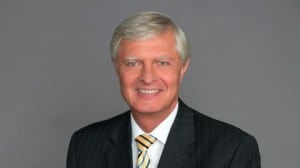Latest News
[Via Satellite 11-12-13] Germany, with its buoyant economy, is a potential hotspot for satellite, particularly in terms of broadcast. Despite the inroads Sky Deutschland has made in recent years, the broadcast market has historically been a tough one for satellite to have a sizeable impact in this country. A strong Free-To-Air (FTA) environment still exists, making it more difficult for pay-TV. One of Germany’s, as well as Europe’s biggest broadcasters is ZDF. Andreas Bereczky, production director, ZDF outlined to Via Satellite the challenges facing the broadcaster in Germany, as well as where satellite fits in and his views on 4K.
While it may have been the talk of IBC 2013, Bereczky does not expect ultra-HD (4K) to make an impact in Germany for at least five years. “If you look at Germany, we are not even really using the full two million pixels for full HD yet. So, in terms of 4K, I would say we need to broadcast in full HD first. This is the next logical step for us. With 4K, right now, there is no equipment on the market,” he said. “So, in Germany this would mean a change of anywhere between 40 to 60 million TV sets after the households only recently have invested in HD TVs. I believe 4K will have a future in Germany, but not within the next five years.”
In terms of the 2016 Olympics as a showcase for 4K in Germany, Bereczky added, “There are issues around getting the 4K signal to the customer. There is no technology like Blu-Ray for 4K today, so how do you transfer the signal to customers? What I am saying is that we need a lot of development in technology concerning the signal chain. It is not enough to have a wonderful big screen; 4K will not have the same sad story like 3D TV. But, I believe we will need more time for a lot supply chain issues to be resolved.”
Bereczky said satellite accounts for around 45 percent of the TV market in Germany, calling it “a major distribution platform.” “We are distributing all of our channels in SD and HD. We would like to stop the SD transmissions probably in the next few years. But, even now in Germany, we do not have 100 percent HD TVs in households in Germany. We are distributing all our content in HD. I think we reached around 60 to 70 percent of HD penetration in households in Germany. I believe we won’t reach the 100 percent HD TV penetration for another five years. It could even take more than five years. Anyway, I believe we will see HD only distribution on satellite first, and not via cable,” he said.
However, for satellite to succeed in the broadcast market in Germany, Bereczky believes satellite will have to better support Internet video. “Internet consumption time maybe increasing, but people are using both platforms. There is not too much cannibalization taking place. I believe satellite is locked into one-way distribution. It is an excellent way to deliver this one-way pipe, but satellite really needs some kind of support of Internet activity,” he said. “I believe you will see in the market, over the next one or two years, a convergence of technologies. You will see LTE devices, satellite and Internet television, etc. People are not caring about which way they receive TV.”
For a broadcaster like ZDF, the challenges are many. In terms of key technology initiatives, the company is modernizing its Internet infrastructure. Its VoD platform is now seven years old, so this means the application software ZDF uses is also seven years old. “We need to renew this application. We need new software architecture in terms of services and design. We will launch our new catch-up TV platform in two year’s time,” said Bereczky.
Bereczky describes Germany as a unique market with three defining characteristics. “If you look at the public transportation system, it is the only country I know where public transport is free to access, without gates. Everywhere else you have to open gates and show that you have paid. The second characteristic, we don’t charge to use highways for cars. In many other countries, there are charges to use roads.”
He continues, “The third characteristic is free television services. Free TV has a market share of over 80 percent in Germany. It is very difficult for pay-TV. There are huge amounts of FTA channels. IPTV is coming into the market slowly. The number of pay-TV subscribers is increasing, but not dramatically. Paid TV services is a slow growing market. IPTV has a market share of two million in a market of 40 million TV households. It is a slow growing business as well. I don’t see a dramatic change in consumer behavior in a short term.”
Get the latest Via Satellite news!
Subscribe Now